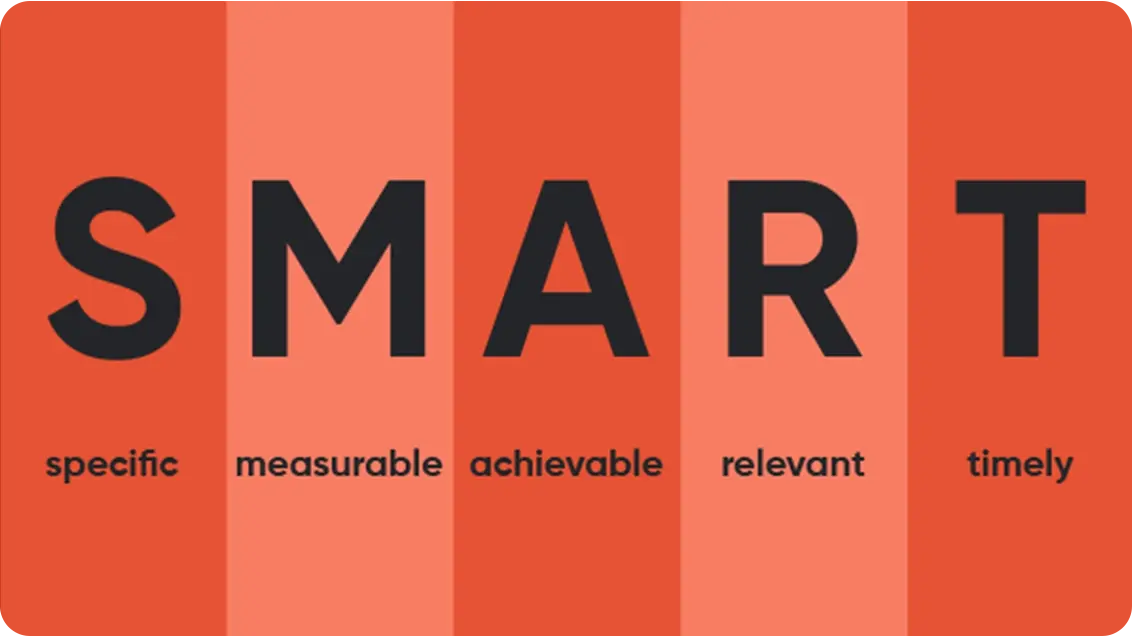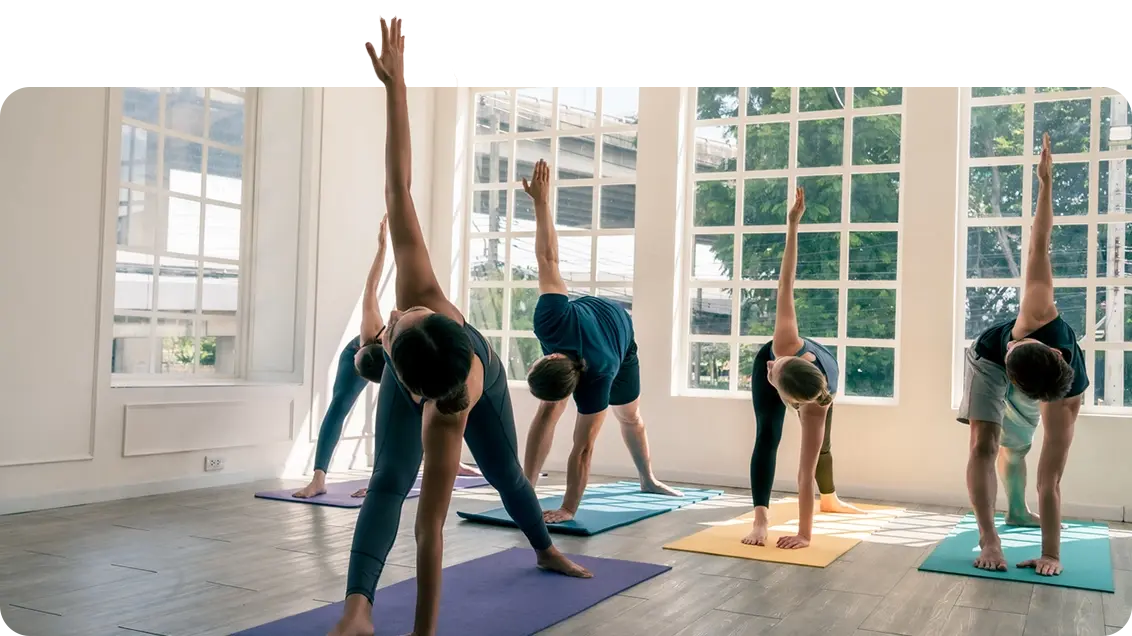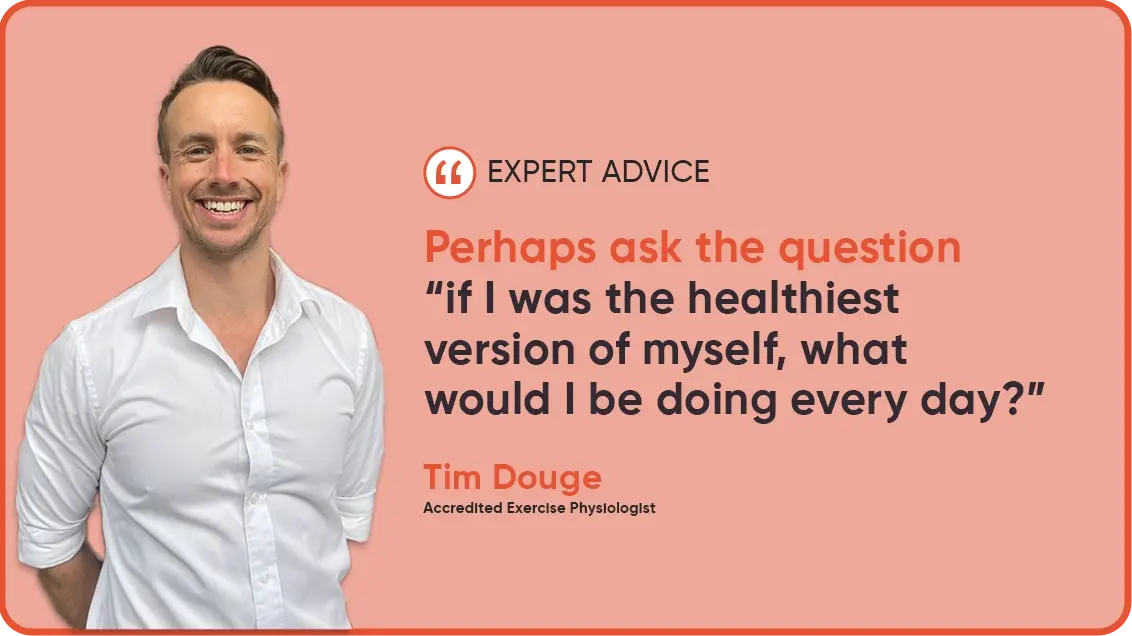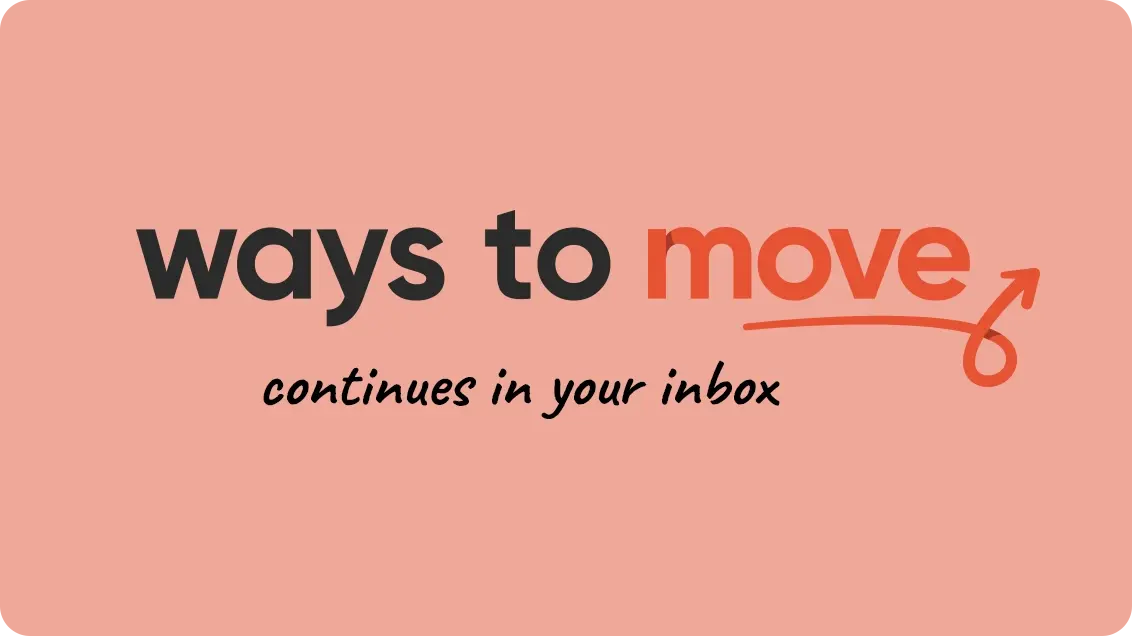Tips for goal setting | Ways to move | healthylife
tips for goal setting
You’ve heard that exercise is great for your energy levels. But to get these benefits, you’ve got to be consistent, and this is where many of us come unstuck.


Goal setting is a great way to help you increase your daily physical activity levels. But it’s how you set your goals that really matters…
We’ve all been guilty of making New Year’s Resolutions we don’t stick to; resolving to eat healthier, exercise more, journal more… you know the ones! The problem is that we aren’t setting our goals in the right way. They’re either too vague or too big or they don’t really mean anything to us, so we quit. If this sounds familiar, we’ve got some tips to help!
Let's develop some SMART goals
When we think of goal setting, we often think of our desired destination or outcome. But it’s also important to attach that outcome to a sustainable, enjoyable behaviour.
SMART stands for specific, measurable, achievable, relevant and timely. Let's take a closer look.

- Specific: Instead of focusing on something vague, it’s important to make your goals specific! For example, try to avoid making goals like “exercise more”. While it’s good in theory, it doesn’t really give you much direction. Instead, a specific goal might look like this: “walk for 30 minutes, three times per week”.
- Measurable: Your goals should be able to be quantified. For example, a target of “3km” or “7,000 steps” is easily measured, whereas “walk more” is not.
- Achievable: Is it possible to reach your goal in the timeframe you’ve set? If you’ve never run before, then aiming to do a 10km fun run in two weeks simply isn’t achievable. If the goal isn’t achievable, then you may be left feeling overwhelmed or dejected and will be more likely to quit. Don’t be scared to push yourself, but be sure to keep goals realistic.
- Relevant: Ask yourself whether the goal is relevant to YOU. If you’re simply exercising because “my GP told me to”, then you probably won’t feel very motivated to achieve it. Instead, finding a goal that resonates with you, like “I want to be able to play and keep up with my grandchildren”, means there’s a greater likelihood you’ll stick at it.
- Timely: Every goal needs a deadline. Without giving yourself a timeframe, it’s hard to know whether you’re on track. It’s a good idea to set both short and long-term goals so you have regular milestones to aim for, rather than one big (and perhaps daunting) goal at the end.

Expert tips for goal setting
Accredited Exercise Physiologist, Tim Douge, has these tips for setting goals you can stick to:
- Pursue something meaningful to your own life and circumstances. It’s easier to be inspired by other people or the media to try and achieve a certain ideal or performance, but these can be unrealistic and don’t take into account your individual needs or circumstances. Take the time to figure out what YOU would like to have as a part of your health and fitness in the future. Perhaps ask the question “if I was the healthiest version of myself, what would I be doing every day?”
- Identify the barriers. Life is complicated and our best intentions can go astray for a number of reasons. Try to prepare solutions for these things BEFORE you start your plan of action. You will most definitely encounter more than you expected but these are chances to learn and adapt to find a new way forward.
- Take time to reflect. No one ever sets a goal and hits it without any challenge along the way. When challenges arise or perhaps you aren’t quite achieving what you set out to, reassess the things which make it more difficult or easier to achieve, and adjust your goal accordingly.

- Celebrate. Sometimes setting a goal can make us hyper-focused on achieving a specific outcome that we forget about all the little wins along the way. Understanding and acknowledging your ability and power to change and grow is a big motivator to keep going!

Now that you’ve got some great tips and tools for goal setting, perhaps it’s time to get going with a plan. Writing down your goals (or typing them, on your computer or even in your phone) and checking in on them regularly, helps to keep you accountable. Happy goal setting!
Keep an eye on your inbox
We have lots more to come - keep your eyes on your inbox!
Next up, we have some specific information on the physical activity guidelines and how to put this into practice with your very own fitness tracker!

Content prepared by Exercise & Sports Science Australia (ESSA)
This page is for informational purposes only and does not provide medical advice, diagnosis, or treatment. Any information published on this website or by this brand is not intended as a substitute for medical advice. If you have any concerns or questions about your health you should consult with a health professional.
